How James’ thermal imaging survey from The CHEESE Project helped to guide his retrofit journey
It’s always a great pleasure for us when we get feedback from customers about what they are planning and how our guided survey helped them to tackle causes of cold in their home. Recent feedback in our follow-up questionnaire prompted us to reach out to James in Bristol to see if he would be happy to share with all of you about the DIY and larger works they have undertaken in the quest for energy efficiency. Huge thanks to James for sharing, and we wish him and his family all the best each step of the way!
Background
“We moved into our typical Edwardian/Victorian terraced house in 2014 and energy efficiency measures were low down on our priority list. We had wood floors! Lovely cornice! Big rooms! But… the house was cold. Watching telly with a rug on in the evening was standard (and no great sacrifice) but the bathroom could be baltic, and it suffered with condensation and mould, as did most of the areas around the single glazed aluminium windows including the bedrooms. With two young children, we needed to do better.
UPVC Double glazing and an extractor fan for the bathroom helped with the condensation, but the house (and its now beautifully stripped, if draughty, pine floors) continued to be cold.
The kitchen, especially as a babysitter pointed out one December evening, could be 10 degrees colder than the rest of the house – 8/9 degrees despite a large radiator. So, in 2023 we were finally able to add a modern kitchen extension built to regs and the change was remarkable. The coldest room in the house had become the warmest and the penny dropped: if only we could get the old parts of the house to perform as well as the new parts!
Enter retrofit!
Insulation. Airtightness. Heat pumps. MVHR. Solar Power. All of it sounded good if slightly overwhelming. An opportunity (made in part possible by some inheritance) to lower our bills, have a cosier, healthier home, and slash our carbon footprint. But before we started it seemed logical to assess the house as it was now and make sure what we were planning was worthwhile in terms of financial investment versus the practical return.
We had already used the Retrofit West website to source some local trades to quote on our potential works (all of whom offered friendly, kind advice on our approach) and from there we also stumbled into The CHEESE Project. A heat loss thermal survey was just the ticket – and with a voucher the cost wasn’t too off-putting.
Cheesey Breesey
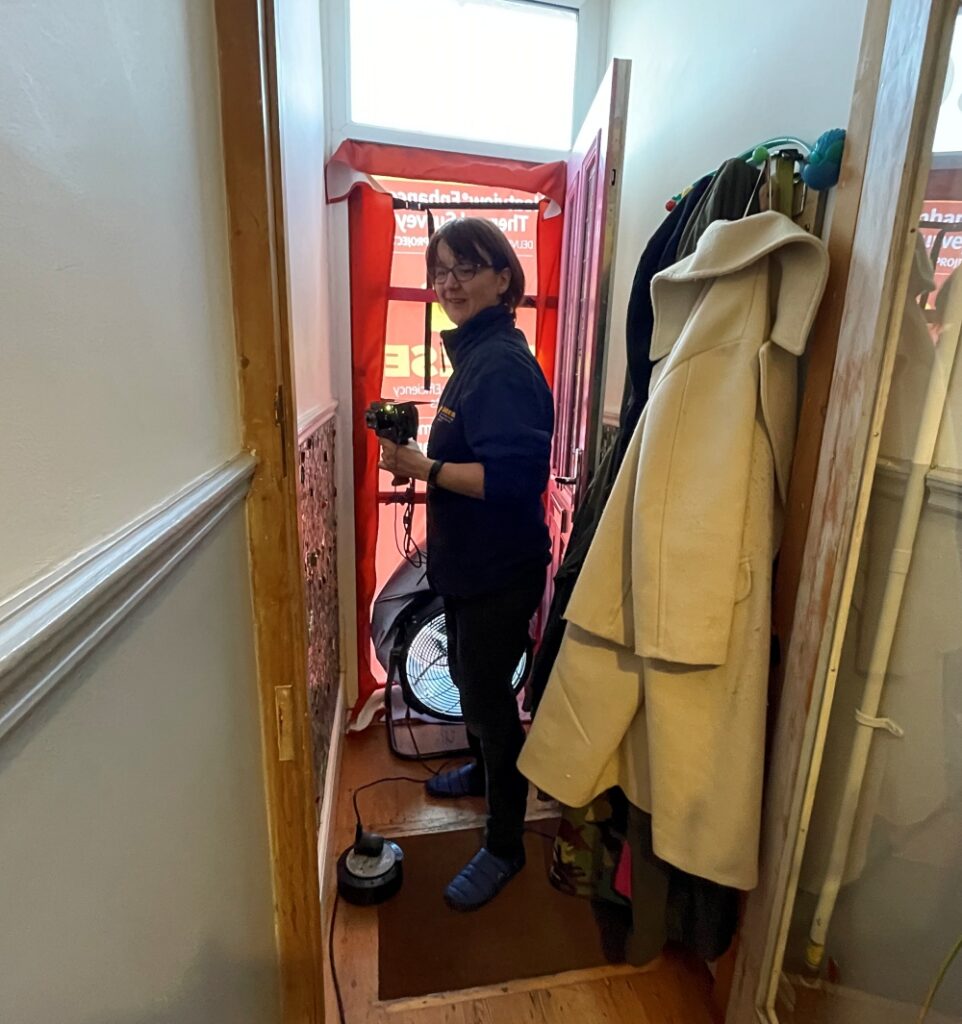
On a suitably chilly day, having run the heating as instructed, Jo the surveyor arrived and fixed a massive fan to our front door and proceeded to suck the air out of the house, and in the process encourage cold air into it that could then be spotted with her thermal camera. As a process it’s simple but also quite magical. As we toured the house, areas we had long suspected as being the culprits for the chill were revealed in all their horror visually on Jo’s camera.
The stripped floorboards whilst looking lovely still had dark colder lines on the joins (despite being filled with wood slivers). The wood surround around the windows was revealed to be an empty void where once sash cords and weights would have been, now open to the exterior except for a small PVC bead. Cold and windy and potentially the reason our front rooms were more exposed to traffic noises than our neighbours.
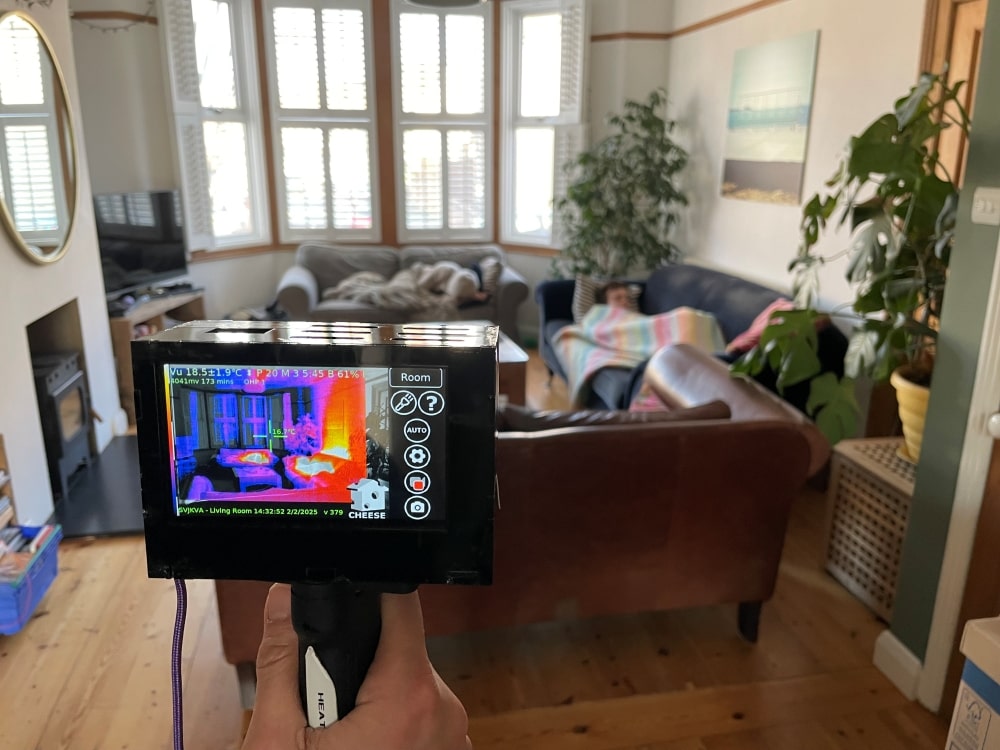
The same in the bathroom where the window had slipped out of square during the building work. Also, a huge gap through the side of the bath panel.
Worst of all the loft, a half conversion by the previous owners 30 years ago was revealed to be lacking in the insulation that would have stopped it sinking to 8 degrees in the winter and hitting 36 in the summer whilst working from home.
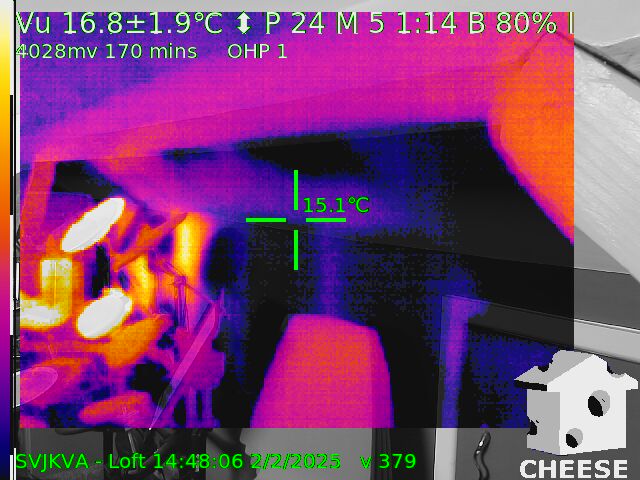
Throughout the tour Jo (a practicing eco-minded architect) was able to suggest practical approaches to dealing with the issues and give a considered opinion on our longer-term plans. More than anything her engagement and enthusiasm encouraged us to act and within days a couple of small inexpensive measures made a world of difference to our lives.
Action Stations!
First, we patiently filled the sash voids around the windows with bean bag balls, eventually using 10 cubic feet of them across the ground and first floor bay. Then as a stopgap measure, we gaffer taped the worst of the gaps around the bath and bathroom window. After the initial glow from the exertion there was another new, previously not experienced feeling too. The house was warm during cold weather for the first time in 11 years! And seeing the results from such simple effective measures gave us the confidence to push forward with our bigger ambitions.
Today
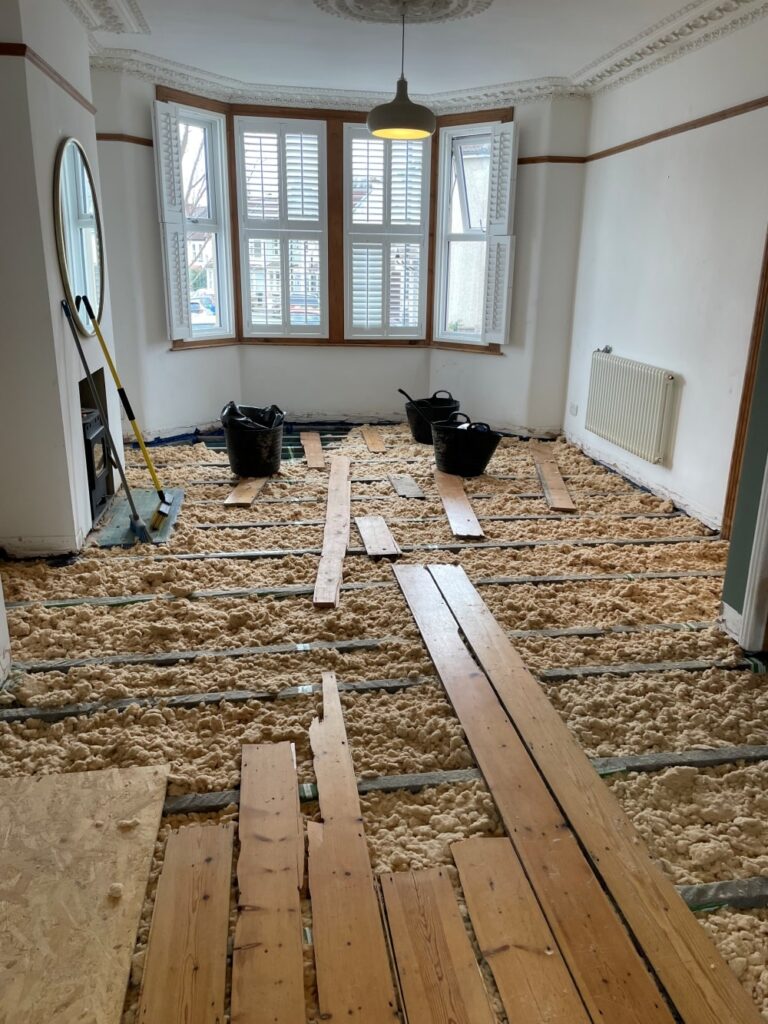
The suspended floors on the ground floor have now been insulated and we’re midway through rebuilding the loft with better insulation. We’ve also used this as an opportunity to gain access to the ceilings below and install ductwork for a future Heat Recovery Ventilation Unit. Overall, our ambition is to reach a stage where the house will easily be heated by an air source heat pump and will be futureproofed (by the MVHR ventilation) to allow us to upgrade insulation and airtightness as we can without creating worries around air quality and moisture management.”
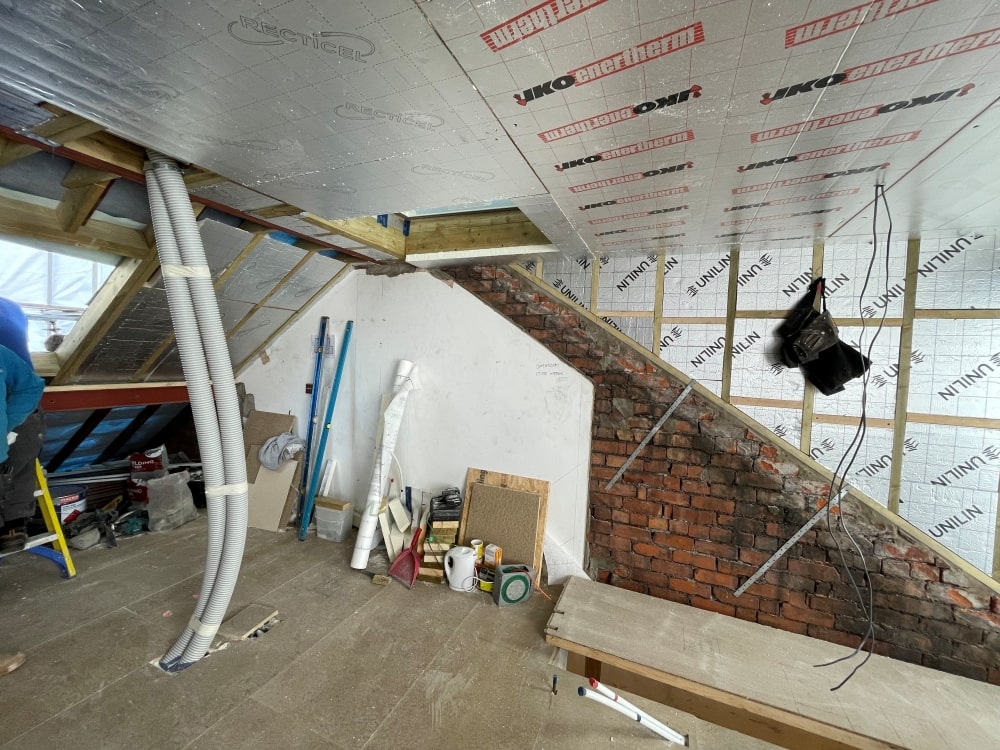
Find out more
It’s so great to hear about the impact the survey and works have already had on James and his family’s comfort at home. If this leaves you feeling inspired and you’d like to book in your own thermal imaging survey with The CHEESE Project, you can register your interest here for when our Autumn 2025 season opens.
